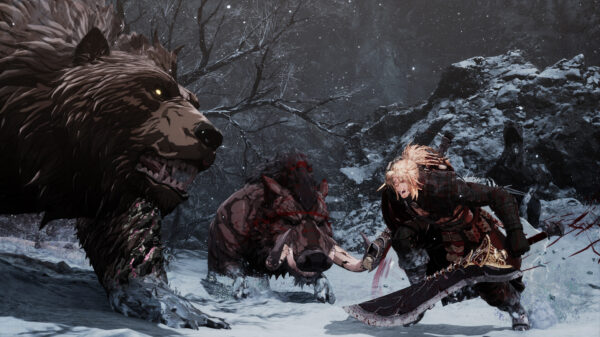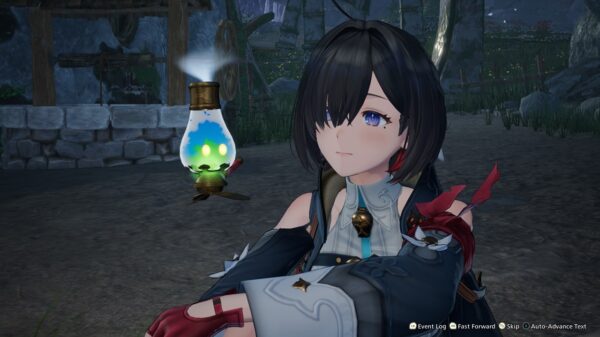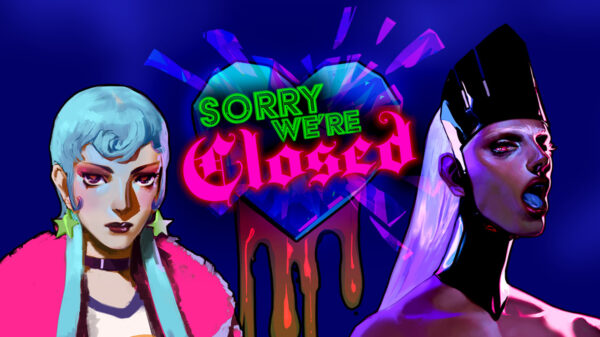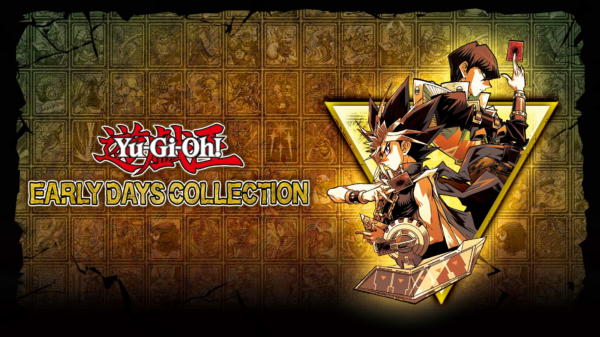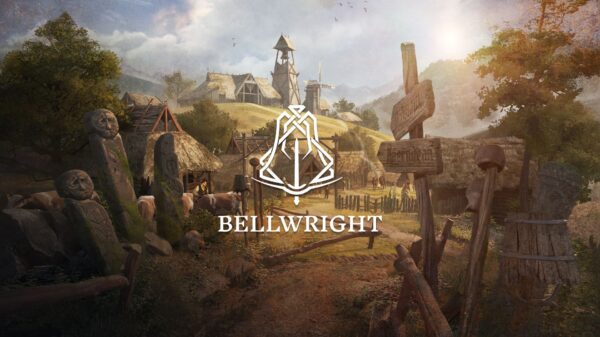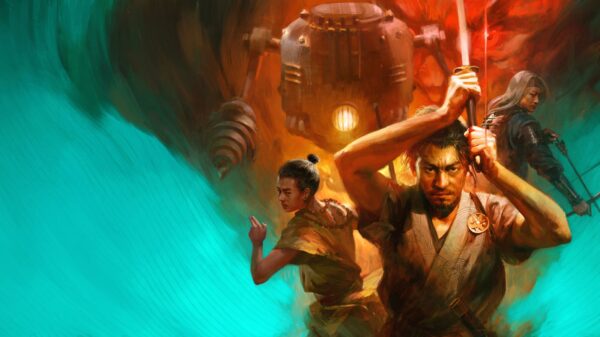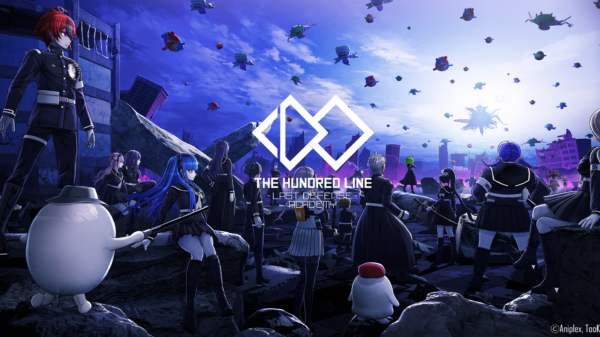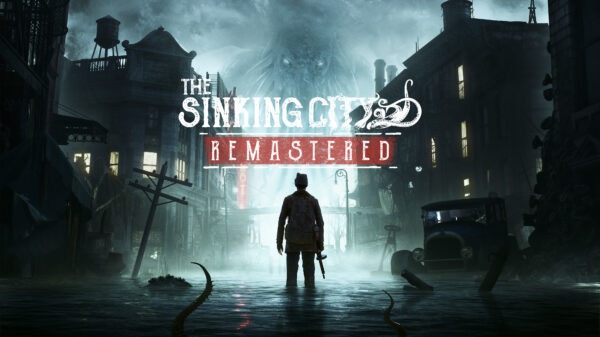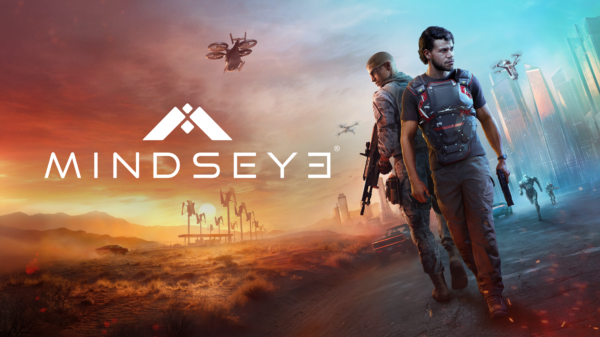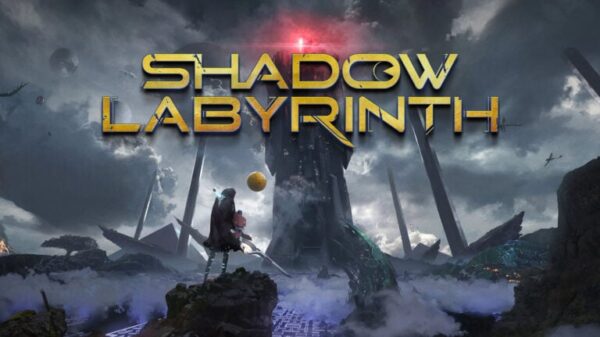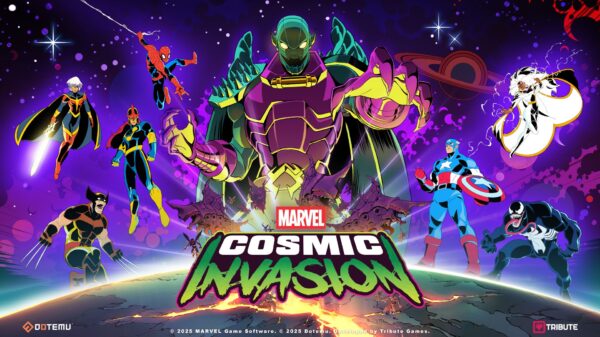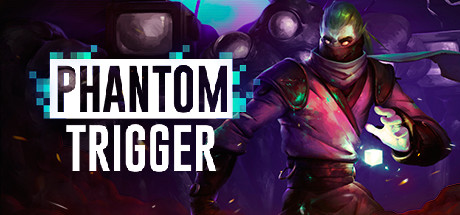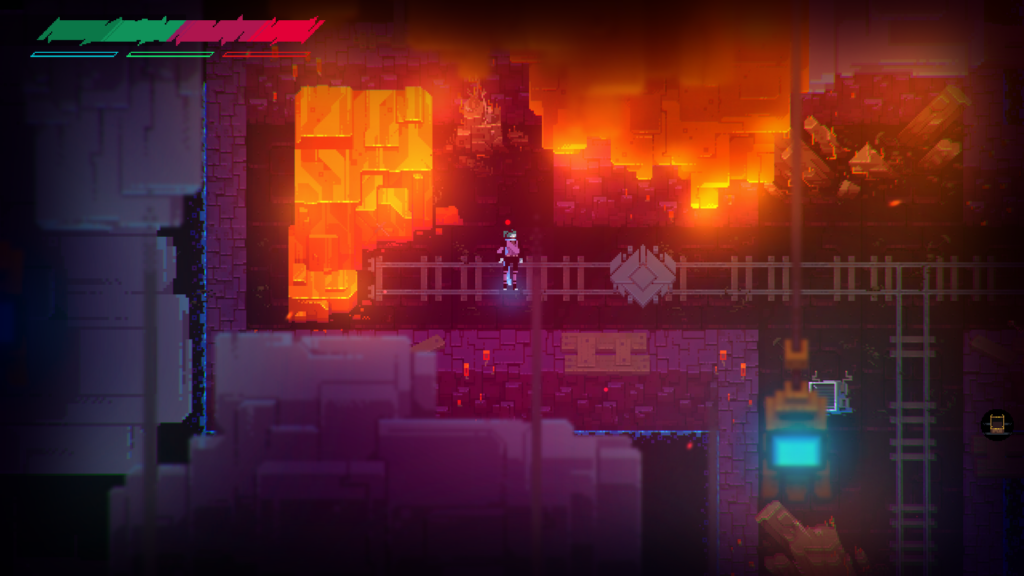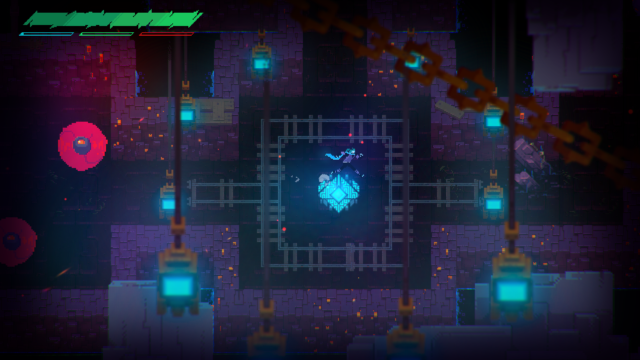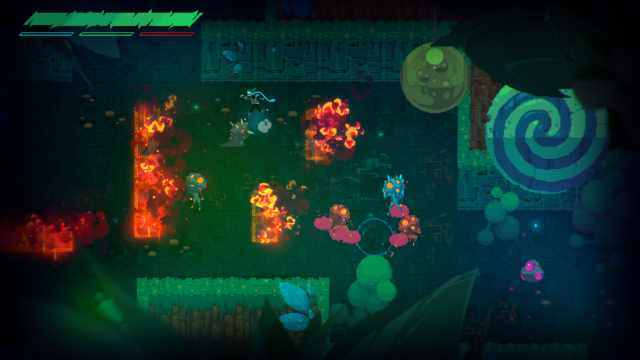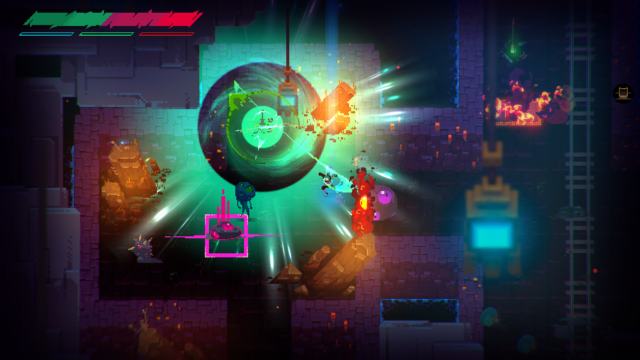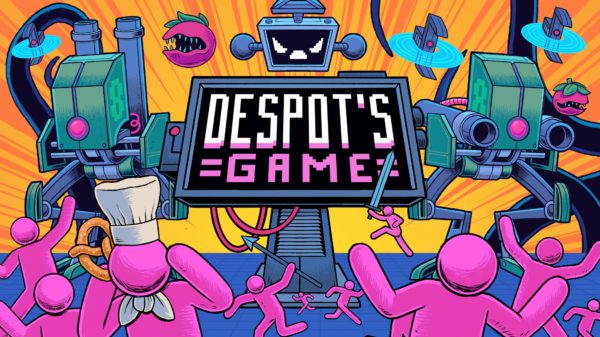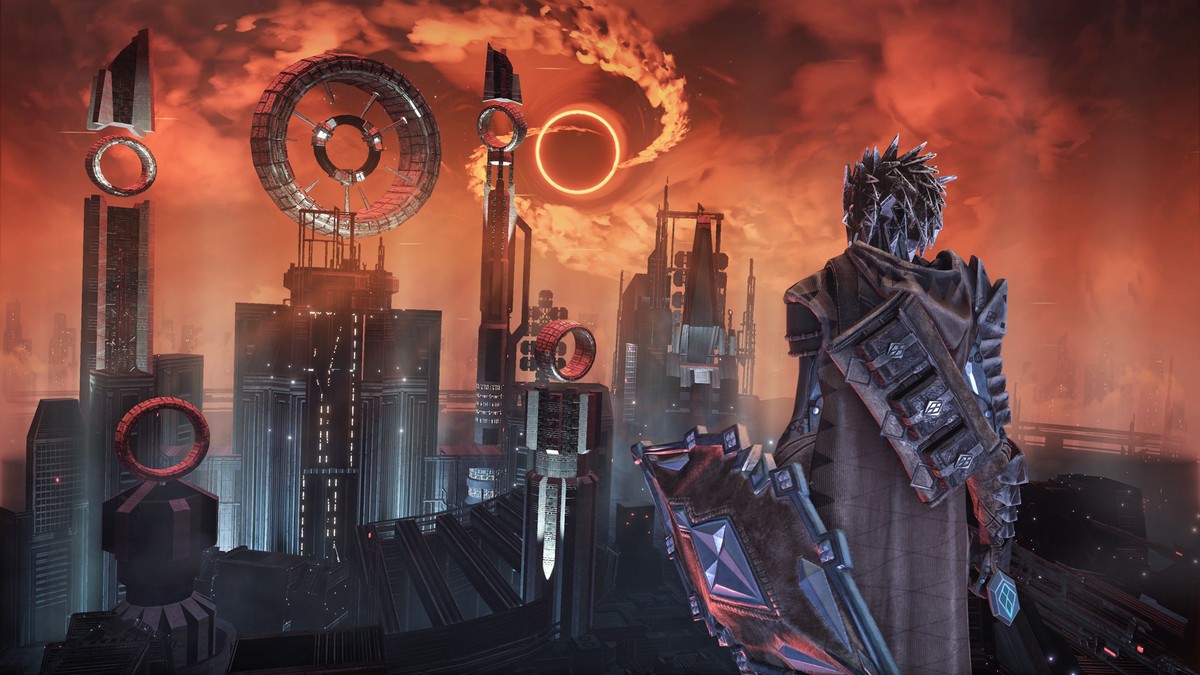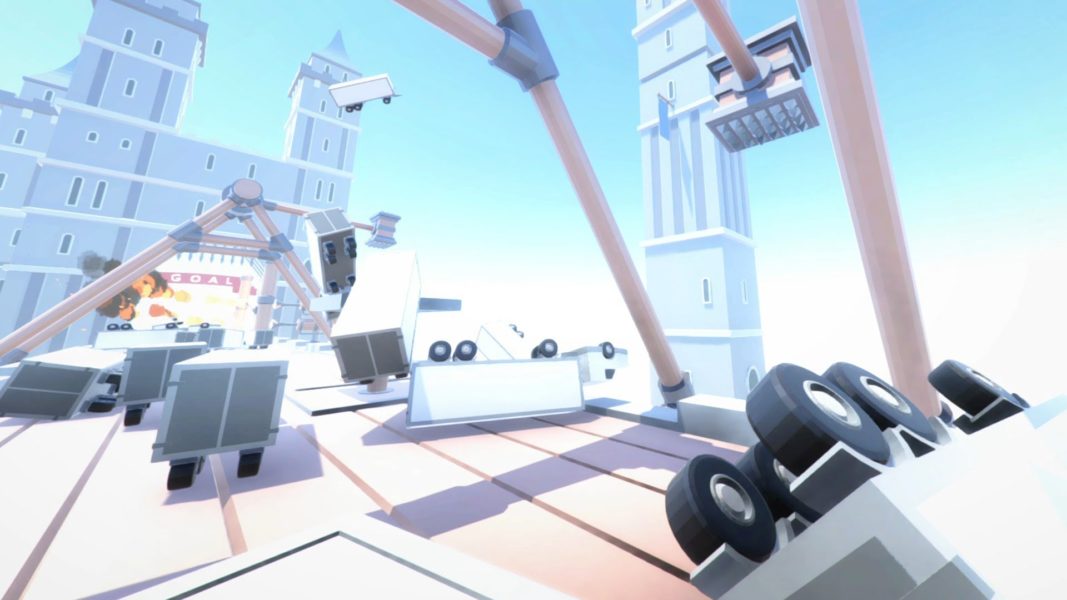Phantom Trigger seems like a typical slash ‘em up combat game on the surface, but what sets it apart is its neon style and its cryptic story. It blends it’s neon with a complex, cryptic story and has a simplistic yet punishing combat system which grows stale after time.
Phantom Trigger
Developer: Bread Team
Price: $14.99
Platforms: Switch (reviewed), PC
MonsterVine was provided with a code for review.
What first pulled me into Phantom Trigger is its retro-future art style. The pixel art style has been done to death, but Bread Team managed to make theirs appealing by using a bright, neon color pallet is slightly pixelated and fully neon in a way that pleases me everytime I look at it. The view is pulled out and overhead but the details in the environment are still made apparent through crystal spikes, decaying corpses and ever present floating particles. The art compliments the mysterious story, bringing the two together, strengthening the mood. The grotesque, blobby nature of a lot of the enemies are interesting too look at monsters –more than just meatbags to serve the combat.
The combat starts out simple, one button for each weapon and a teleportation dash for evasion. You earn all of your weapons very quickly and they control in a way that makes sense. A sword, whip gauntlets, and dash each bound to a separate button and a corresponding color. These weapons level up as they are used, and when weapons pairs reach certain levels different combos are unlocked. This is a smart wait to handle progression as it encouraged me to use all of the weapon types to max them out. Having combos locked by multiple gear levels (Whip lvl 7 and sword lvl 6 for example) are very satisfying to unlock and I found myself looking forward to each goal. The downside is the level caps are set at a low level 7, and while I only reached them towards the end of the game I was left wanting to continue my progress and discover new combos. These combos are simple three-button attacks that usually result in some sort of elemental ranged, or area-of-effect style attack. My favorite combo was the last to unlock, which involved the sword, gauntlets and whip culminating in a green explosive blast.
The other side of the combat is very reactionary and tactical. Enemies all have specific tells and attack patterns. Using an attack spamming method results in taking more damage and dying frequently. The design of each enemy makes everything obvious, as it is recognizable and rewards smart gameplay. Tutorials are all accomplished with virtually no handholding. I appreciate when a game teaches players by doing and Bread Team did an excellent job achieving that in Phantom Trigger. Occasionally during combat enemies will only be able to be damaged through certain attacks, all made clear by visual cues, never explained yet learned through clever game design. Enemies are a variety of creepy monsters; ranged attackers can look like humanoids with a TV for a head that shoots lasers. There are also melee attackers and enemies that deal their own area-of-effect attacks. However, due to the lack of depth in enemy variety and combat moves I grew a bored of the combat with still a mission and a half left to complete. Paying attention and being methodical is all it takes to be successful, and you better pay attention to the difficulty: there is only ‘normal’ and ‘hard’ and Bread Team starts you out on ‘hard’ by default. Even when things are on hard, enemies still drop the occasional health pickup and checkpoints are scattered throughout levels, and completely refill health on first activation. Things can be overwhelming towards the end of the game, and in the unlockable arena mode, when heaps of enemies are thrown at the player at once. This becomes a game of spinning plates, staying away from enemies that with more stationary attacks, kiting the ones rushing in for proximity damage while also being aware of ranged attacks and being ready to dash out of damage.
The parts of the combat that kept me most interested were the dynamic boss encounters. The boss battles never felt impossible, but took me a few attempts before learning the gimmick. Each boss fight felt different and left me wanting more, as once the gimmick is figured out the challenge is minimal. I would have liked to have more bosses peppered throughout the story, or larger scale enemies as minibosses to freshen up the monotony of fighting the same handful of basic enemy times for the majority of the game.
Even more cryptic than learning the combat is how the story of Phantom Trigger unfolds. It opens in a real world kitchen with the main character talking to his partner about breakfast, he then collapses and wakes up in the world where all of the combat takes place. It doesn’t take long for the story to start making sense but it had me scratching my head as I put together the pieces between the short bits focusing on plot. Phantom Trigger hits story beats in a very stylish way using Interstitial moments which break through the combat world with a visual effect. Distortion lines flicker randomly throughout gameplay and it feels like at any moment a plot thread may reveal itself. I enjoy this type of story-telling and was excited to learn more about the mystery the more I played.The story of Phantom Trigger can probably be completed in under 7 hours if you zip through the content with a few branching paths and endings depending on how you handle things between missions. I must have gotten a ‘bad ending’ by the way my story wrapped up, and I am interested in replaying again in co-op to try things a little differently.
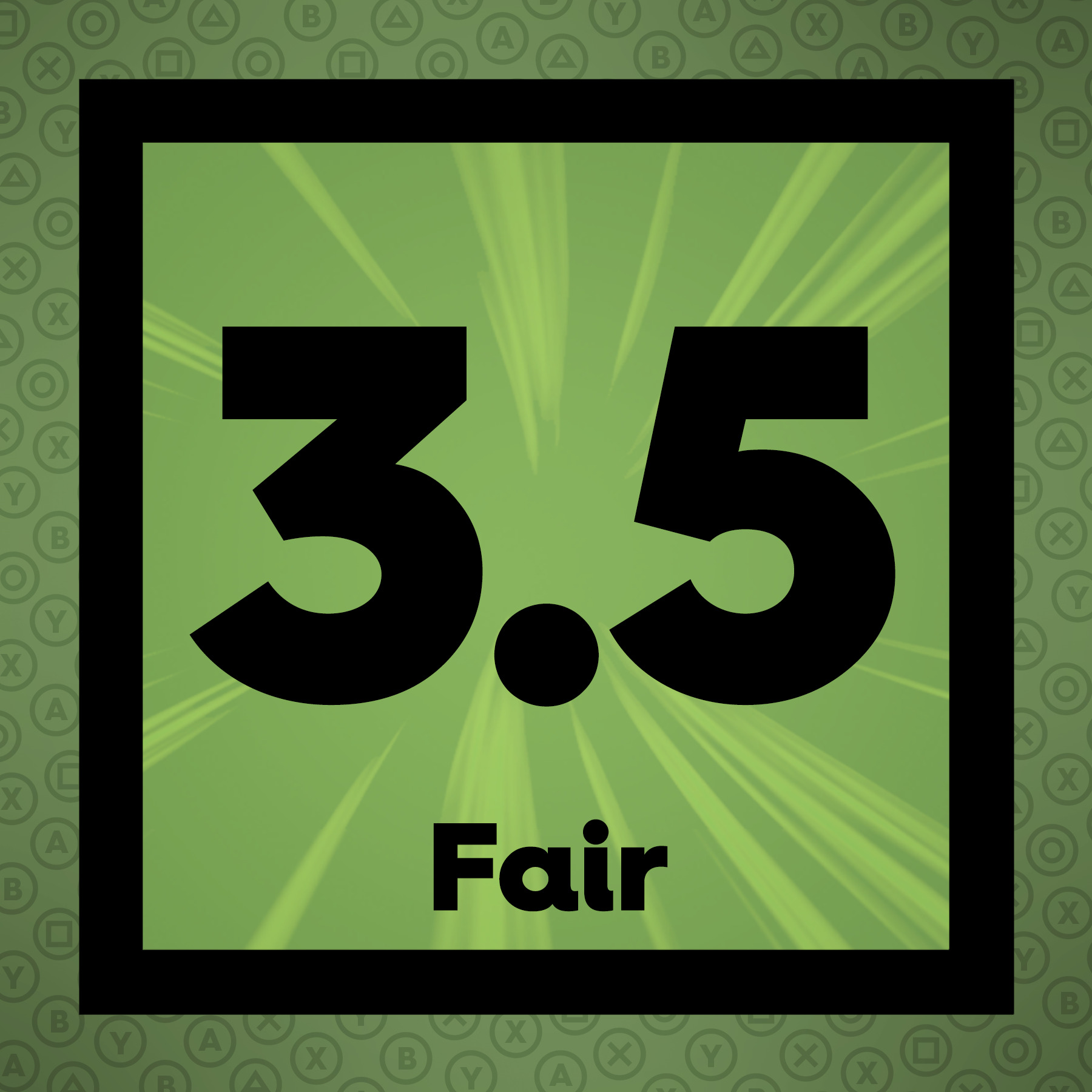 The Final Word
The Final Word
Phantom Trigger has a beautiful style, pixel art in a good way with faux-artifacting, bright colors and lovely lighting. The combo systems make the challenging combat more interesting, but by the end I found the core enemy encounters to be repetitive and I found myself trying to avoid combat completely after I ran out of upgrade paths. The narrative starts in left field and keeps making interesting turns through and had me at the chomping at the bit to make sense of the mystery.
MonsterVine Rating: 3.5 out of 5 – Fair

